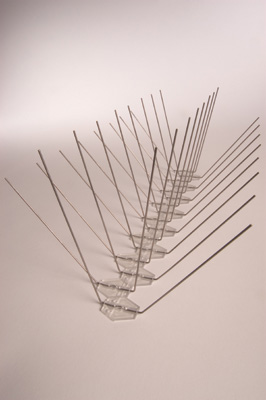|
|
 |
 |

| Services |
|
Return to top |
Most wasps are carnivorous, feeding on insects, grubs, or spiders. They have biting mouthparts, and the females have stings with which they paralyze their prey. Most Wasps have red, orange, or yellow wings or markings. |
|
|
Return to top |
Ants as a group are beneficial to humans. Their tunneling mixes and aerates the soil, in some places replacing the activity of worms. All species show some degree of social organization; many species nest in a system of tunnels, or galleries, in the soil, often under a dome, or hill, of excavated earth, sand, or debris. Mound-building ants may construct hills up to 5 ft (1.5 m) high. Colonies range in size from a few dozen to half a million or more individuals. |
|
|
Return to top |
Fleas have hard bodies flattened from side to side and piercing and sucking mouthparts. Their legs are powerful and adapted for fast movement and jumping, enabling them to find new hosts as well as to escape quickly the attempts of the hosts to remove them.
|
|
|
Return to top |
Cockroaches have long antennae, long legs adapted to running, and a flat extension of the upper body wall that conceals the head. They range from 1/4 in. to 3 in. (1–8 cm) in length. Some cockroaches have two pairs of well-developed wings, the front pair covering the hind pair when at rest; others have reduced wings or none at all. Most cockroaches are shiny brown or black. |
|
|
Return to top |
Stout-bodied rodents, usually having a pointed muzzle, long slender tail, and dexterous forepaws. Rats live mostly in and around human settlements, where they have few natural enemies and an abundant source of food. They invade food supplies and cause widespread destruction; they also spread human diseases such as typhus and tularemia. Despite human efforts to exterminate rats, the house rat population is probably equal to the human population. |
|
|
Return to top |
Name applied to numerous species of small rodents, often having soft gray or brown fur, long hairless tails, and large ears. The chief distinction between these rodents and rats is in their size: mice are usually smaller. Many small rodents are adapted for leaping, hopping and climbing. |
|
|
Return to top |
A burrowing mammal living chiefly underground, having velvety fur, very small eyes with permanently closed lids, and strong forefeet, |
|
|
Return to top |
Pigeons have soft swellings (ceres) at the base of the nostrils, feed their young with “pigeon's milk”, and have specialized bills through which they can suck up water steadily,unlike other birds. They primarrily eat fruits and seeds.
See Also Guano Cleaning
|
|
|
Return to top |
Long-winged, web-toed, aquatic birds, usually having white plumage with a gray back and wings. Scavengars of all typres of food.
See Also Bird Proofing, Guano Cleaning
|
|
|
Return to top |
A flat, wingless, bloodsucking insect, that infests houses and especially beds. |
|
|
Return to top |
Rabbits have large front teeth, short tails, and large hind legs and feet adapted for running or jumping. In most, the length of the ears is considerably greater than the width. Wild rabbits are up to 16 in. (41 cm) long and usually weigh 2 to 3 lb (1–1.5 kg). They have soft, thick fur, usually grayish brown above and white below. The tail is usually carried upright when the animal runs, exposing the white undersurface. Common rabbits live in elaborate systems of adjoining burrows called warrens. |
|
|
Return to top |
The adult moth has sucking mouthparts, two compound eyes, and two pairs of wings that function as a single pair and are covered with flattened, dustlike scales. With a usually hairy body and its unknobbed, often feathery antennae. Most moths are nocturnal in their habits. |
|
|
|
 |

|
|

